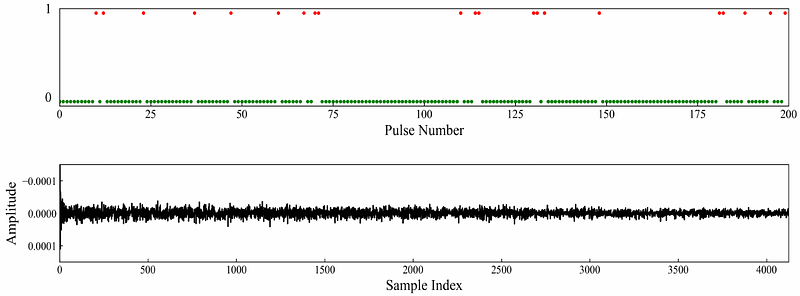Single-Pulse Morphology of PSR J1935+1616 (B1933+16) Based on archival data from FAST

Single-Pulse Morphology of PSR J1935+1616 (B1933+16) Based on archival data from FAST
R. W. Tian, R. S. Zhao, Marilyn Cruces, H. Liu, D. Li, P. Wang, C. H. Niu, Biping Gong, C. C. Miao, X. Zhu, H. W. Xu, W. L. Li, S. D. Wang, Z. F. Tu, Q. J. Zhi, S. J. Dang, L. H. Shang, S. Xiao
AbstractWe utilized archived data from the Five-hundred-meter Aperture Spherical Radio Telescope (FAST) to analyze the single-pulse profile morphology of PSR J1935$+$1616 (B1933$+$16). The results show that PSR J1935$+$1616 exhibits significant micropulses as well as various changes in single-pulse profile morphology. In the FAST archived data, a total of 969 single pulses with microstructure were identified, accounting for 9.69$\%$ of the total pulse sample, with characteristic widths of $127.63^{+70.74}_{-46.25}$ $\mu$s. About half of these pulses display quasiperiodic micropulses, with a periodicity of 231.77 $\pm$ 9.90 $\mu$s. Among the 520 single pulses with quasiperiodic microstructure, 208 also exhibit quasiperiodicity in circular polarization, with a characteristic period of $244.70^{+45.66}_{-21.05}$ $\mu$s. The micropulse characteristic width in circular polarization is 106.52 $\pm$ 46.14 $\mu$s. Compared to normal pulses, the relative energy (E/<E>) of single pulse with microstructure follows a double Gaussian distribution, while that of normal pulses follows a single Gaussian distribution. Based on the intensity of the leading and trailing components in the single-pulse profile morphology of PSR J1935+1616, we classified the pulses into four morphological modes (A, B, C, and D). The relative energy distribution of pulses in mode A is significantly different from the others, following a double Gaussian distribution, while the relative energy distributions in modes B, C, and D follow a single Gaussian distribution. Our study also suggests a possible correlation between micropulses and single-pulse profile morphology. Single pulse with micropulses are most likely to occur in mode A, while their occurrence is least likely in mode D.